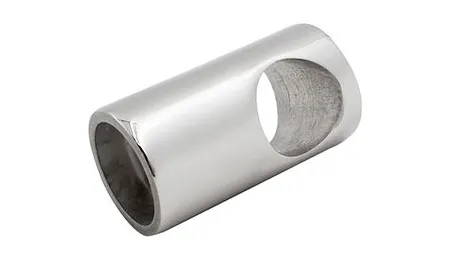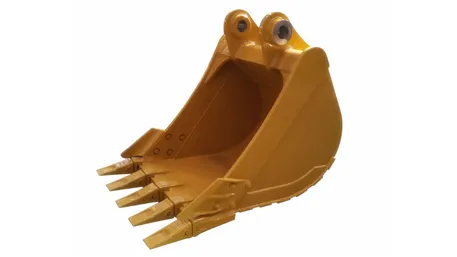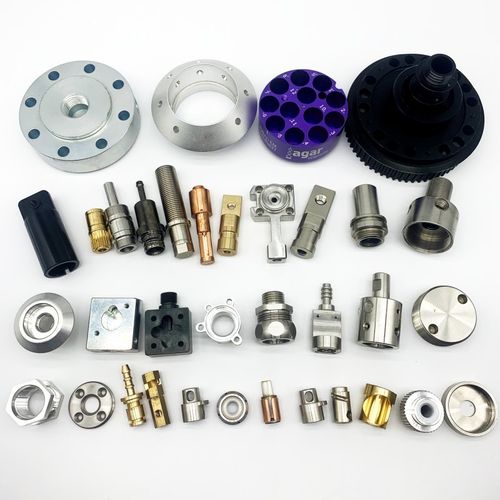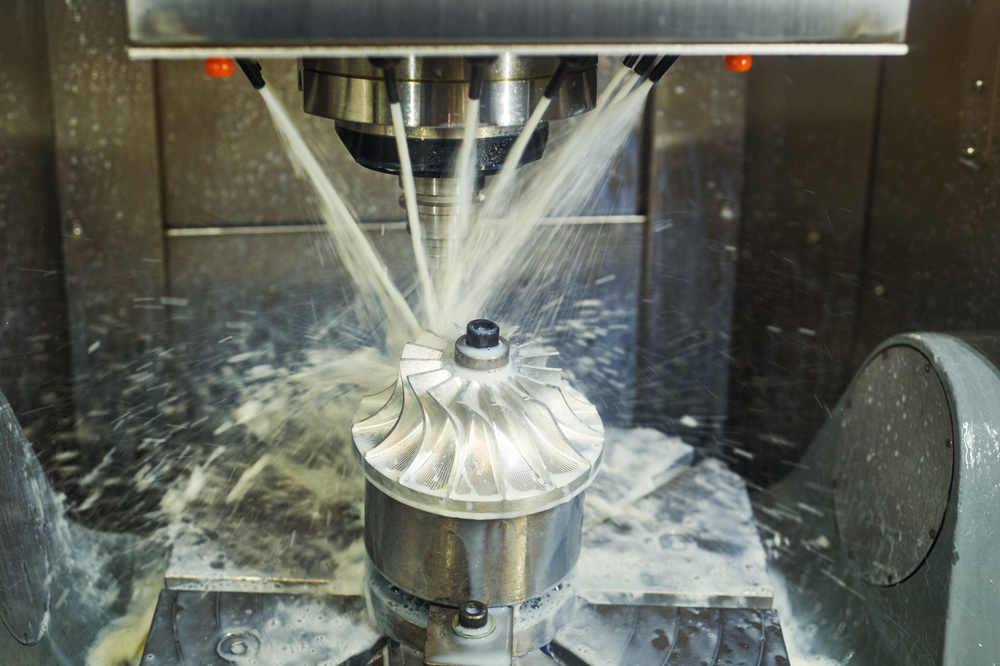In the field of precision manufacturing, **CNC Machining Parts** (Computer Numerical Control Machined Parts) have become the core support for industries such as automotive, aerospace, electronics, and medical equipment, thanks to their high precision, consistency, and mass production capabilities. Whether you need **Custom CNC Machining** or bulk production orders, understanding their technical principles, design essentials, and processing workflows is key to selecting a high-quality **CNC Machining Parts Supplier** and optimizing production efficiency. This article will break down the core logic of CNC machined parts from a technical perspective, providing systematic references for engineers and purchasers.
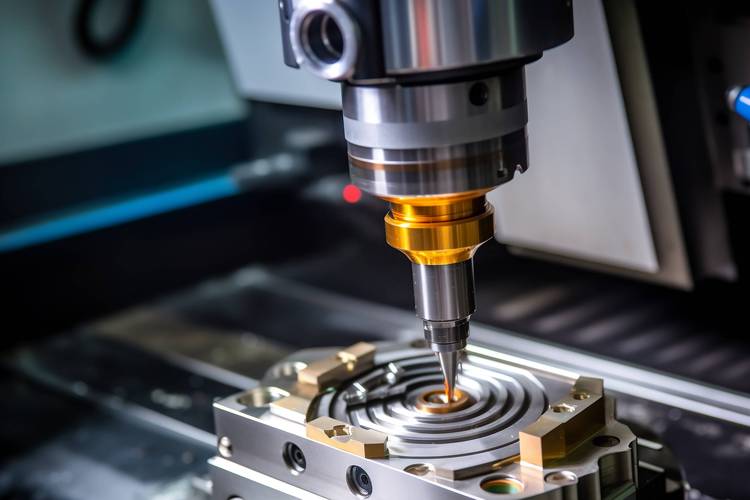
The precision and efficiency of CNC machined parts depend first on the collaboration of the core components of CNC machine tools. According to research from Xometry (an authoritative industry technology platform), a standard CNC machine tool includes 13 key components, among which 6 core modules directly determine the machining quality of parts:
As the “brain,” the MCU parses G-code (numerical control programming language) and converts design drawings into mechanical movement instructions. High-quality CNC Machining Parts Factories adopt high-performance MCUs (such as Siemens CNC systems) that support real-time simulation optimization (refer to Siemens Digital Twin technology) to avoid machining errors in advance, especially suitable for mass production of complex parts.
- Drive System: Controls the servo motor to drive the tool/workpiece movement, determining machining speed and stability. High-precision parts (such as aerospace connectors) require closed-loop drives to ensure displacement accuracy below the millimeter level.
- Feedback System: Collects motion data in real time through gratings and encoders to correct deviations. For example, when machining CNC Turning Parts (shafts), the feedback system can avoid dimensional deviations caused by material deformation.
- Machine Bed: Bears the workpiece and machining load, requiring high rigidity (usually made of cast iron or granite) to prevent vibration from affecting the part’s surface roughness (Ra value).
- Headstock: Drives the tool to rotate at high speed; spindle speed directly affects machining efficiency. When milling aluminum alloy parts, the spindle speed can reach 10,000–15,000 rpm, while stainless steel parts require lower speeds to protect the tool.
Different CNC Machining Parts require matching specialized tools:
- Milling flat surfaces/cavities: Use end mills or face mills.
- Turning shaft/disc parts: Use external turning tools or internal hole turning tools.
- High-precision hole machining: Requires a combination of center drills, twist drills, and reamers to ensure hole tolerance control within ±0.01 mm.
Protolabs (a global rapid prototyping service provider) emphasizes in its technical guidelines: Reasonable design is the core of reducing CNC machining costs and improving part performance. The following 8 design specifications require key attention:
Tools cannot reach “blind areas,” so avoid closed cavities or deep cavities (cavity depth ≤ 4 times the tool diameter). For example, when customizing plastic parts (such as ABS housings), the inner wall should reserve a draft angle of more than 5° to facilitate tool withdrawal.
- Thin-Wall Thickness: The minimum wall thickness of metal parts is ≥ 0.8 mm (aluminum alloy) and ≥ 1.2 mm (stainless steel); for plastic parts, it is ≥ 0.5 mm to prevent deformation due to vibration during machining.
- Cavity Fillets: Internal cavities should be designed with fillets of R0.5 mm or more (avoid right angles) to reduce tool wear and improve the part’s stress resistance.
- Hole depth ≤ 10 times the hole diameter (deep holes require deep hole drilling processes, increasing machining costs).
- The minimum diameter of internal threads is ≥ M2 (threads smaller than M2 suggest manual repair after tapping); external threads need to reserve a 1–2 mm undercut to avoid burrs at the thread end.
- For non-mating surfaces, the tolerance can be set to ±0.1 mm (reducing machining difficulty); for mating surfaces (such as bearing positions), IT7–IT8 grade tolerances should be marked.
- Surface roughness: General structural parts require Ra ≤ 3.2 μm, while sealing parts or moving components require Ra ≤ 0.8 μm (grinding or polishing processes are needed).
Combined with the 2023 machining process video analysis from Protolabs, the standard CNC Machining Parts processing workflow goes through 9 core steps, each of which affects the final quality:
Complete 3D modeling of parts using CAD software (such as SolidWorks, AutoCAD), then convert to G-code using CAM software (such as Mastercam, UG), specifying tool paths, speeds, and feed rates. For example, when machining custom connectors, CAM software optimizes tool paths to reduce tool changes (improving efficiency by over 30%).
Select fixtures (such as vices, chucks, vacuum suction cups) based on part size to ensure the workpiece is firmly fixed. For example, when machining large stainless steel plates (≥ 500 mm), multi-point positioning fixtures are required to prevent displacement during machining.
After installing the corresponding tool, calibrate the tool length and radius compensation values using a tool setter to ensure accurate machining coordinates. Tool setting errors must be controlled within 0.005 mm; otherwise, part dimensions will be out of tolerance.
Before mass production, machine one first article to check whether dimensions, tolerances, and surface quality meet requirements. For example, first articles of automotive parts (such as engine brackets) need to be inspected using a Coordinate Measuring Machine (CMM) before mass production can begin.
- Milling: Suitable for machining flat surfaces, cavities, and complex contours (such as mobile phone middle frames), mostly using vertical or horizontal milling machines.
- Turning: Suitable for rotationally symmetric parts (such as shafts, bushings), where the lathe drives the workpiece to rotate and the tool feeds linearly.
During machining, spray coolant (oil-based or water-based) to:
- Reduce tool temperature (prevent tool annealing during high-speed cutting).
- Wash away chips (avoid chip scratches on the part surface).
- Reduce friction between the tool and workpiece (improve surface finish).
After CNC machining, burrs easily form on part edges, which need to be processed by manual grinding (small parts), vibration grinding (bulk parts), or laser deburring (high-precision parts) to avoid scratching other components during assembly.
Select surface treatment processes based on application scenarios:
- Rust prevention: Galvanizing, chrome plating (metal parts).
- Aesthetic needs: Anodizing (aluminum alloy, such as mobile phone housings), painting (plastic parts).
- Wear resistance: Nitriding treatment (stainless steel parts).
Use multiple testing methods to ensure quality:
- Dimensional inspection: Calipers, micrometers, Coordinate Measuring Machines (CMM).
- Surface quality inspection: Roughness testers, visual inspection systems.
- Mechanical property testing: Hardness testing (such as Rockwell hardness tester), tensile testing (key load-bearing parts).
The machining characteristics and application scenarios of different materials vary significantly. CNC Machining Parts Suppliers usually provide the following mainstream materials, which should be selected rationally based on needs:
A1: The precision of CNC machined parts mainly depends on the machine tool grade and process control. Generally, dimensional tolerance can reach IT7–IT8 grade (e.g., ±0.01–0.05 mm for parts under 100 mm), and surface roughness can be controlled at Ra ≤ 0.8 μm for high-precision requirements (such as aerospace components). Advanced five-axis machining centers can even achieve tolerances within ±0.005 mm.
A2: Materials with good machinability are preferred. For metals: Aluminum alloy (6061, 7075) is cost-effective and suitable for lightweight parts; stainless steel (304, 316) is ideal for corrosion-resistant scenarios; titanium alloy (TC4) is used for high-strength, high-temperature environments. For plastics: POM and ABS are suitable for structural parts, while PEEK is used for high-end medical or industrial parts.
A3: Lead time varies by order volume and part complexity:
- Rapid prototyping (1–10 pieces): 1–3 days (supported by suppliers like Protolabs).
- Small-batch production (10–100 pieces): 3–7 days.
- Mass production (100+ pieces): 1–2 weeks (depending on factory capacity and material availability).
A4: Yes. Most professional CNC Machining Parts Suppliers support small-batch customization (1–100 pieces). They often use flexible production lines and optimized CAM programming to avoid high mold costs, making it suitable for R&D projects, trial production, or small-volume market demand.
A5: Quality assurance relies on three core links:
- Pre-production: Simulate machining processes (e.g., Siemens Digital Twin) to optimize tool paths.
- In-production: Conduct first-article inspection and random sampling using CMM or roughness testers.
- Post-production: Verify compliance with standards (e.g., ISO 9001, AS9100) and provide quality inspection reports.
Are you still worried about:
- Design unreasonable leading to machining failures or cost overruns?
- Not finding a reliable supplier for small-batch custom CNC parts?
- Needing to get an instant quote for urgent prototype orders?
Our team of CNC machining experts has 10+ years of experience, supporting:
✅ Free design consultation (optimize your part drawings for machinability).
✅ Instant quotes for custom parts (response within 24 hours).
✅ One-stop service from material selection to surface treatment.
✅ Quality guarantee with ISO 9001 certification and full inspection reports.
Leave us a message below with your requirements (part drawings, material preferences, quantity, and delivery date), and our engineer will contact you within 1 working day to provide a tailored solution. Let’s turn your precision manufacturing needs into reality!


